The 2011 Consumer Electronics Show, the yearly gathering in Las Vegas put on by the Consumer Electronics Association and its member network of consumer electronics manufacturers, wrapped yesterday. There were all the usual sort of big product announcements, be it state of the art televisions, tablet computers or advanced smartphones. We were there, however, to find the green technology among all the clutter and we came away not too disappointed.
Though there was a lack of blockbuster announcements around green tech this year, several interesting trends emerged from related products and services that were showcased. Connected appliances which help manage energy through smart grid style features, other home energy management tools, electric vehicles, energy efficient home electronics and a plethora of devices sprouting solar panels were all on display.

Take a tour with us over the next several pages as we showcase the more interesting things we found while roaming the CES 2011 booths.
The Connected Home
We’ve talked a lot before about home energy management tools and the smart grid. CES 2011 marked one of the first times the CE industry looks to have embraced this with some gusto. The likes of GE, Toshiba, Samsung, Panasonic and LG – all major players in the consumer electronics space – were showing off in some fashion or another connected devices and smart grid technologies which let your appliances, you and your utilities work together to better manage energy.
The one presenting the most unified solution was GE, who took considerable time to showcase to us their envisioned solution for a connected home of tomorrow today. The core of their system is Nucleus, an eco-system of tools and software that talk to smart grid enabled appliances, smart plugs around your home and your utility through a smart meter to manage energy load and hopefully help you save money on your power bill.
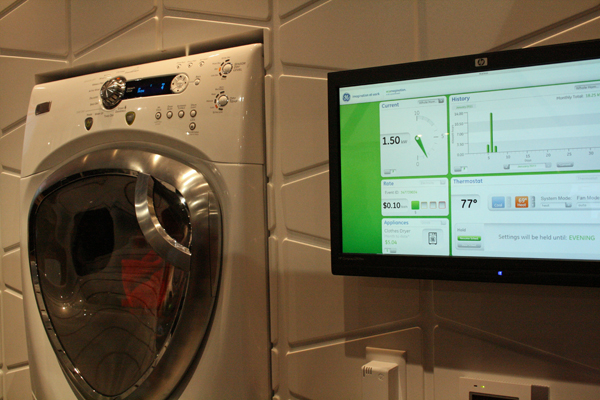
GE’s booth brought together everything from a new wind turbine for residential use (though given the size of it we don’t see it fitting in on top of a lot of typical urban dwellings) to WattStation, the company’s Yves Behar designed electric vehicle charging station (which, incidentally, can be tied into the Nucleus system).
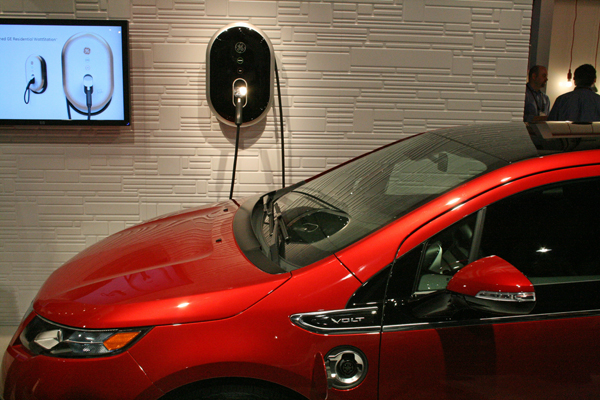
Over at Panasonic, meanwhile, was a dedicated corner focused on environmental products and services. This particular CE manufacturer perhaps has been the most vocal in moving towards greener technologies, and was busy displaying a home energy management system, solar panels, fuel cells for the home, renewable energy storage units and more. They even have their own branded EV charging station.
As for the others, LG seemed particularly obsessed with the connected smart grid appliance focus with touch screen enabled washers, dryers, ovens and refrigerators. They even took the time to build a small scale model home of tomorrow, outfitted of course with their technologies. Toshiba and Samsung, by contrast, were showing off more tame displays mixing and matching their overall green product strategies.
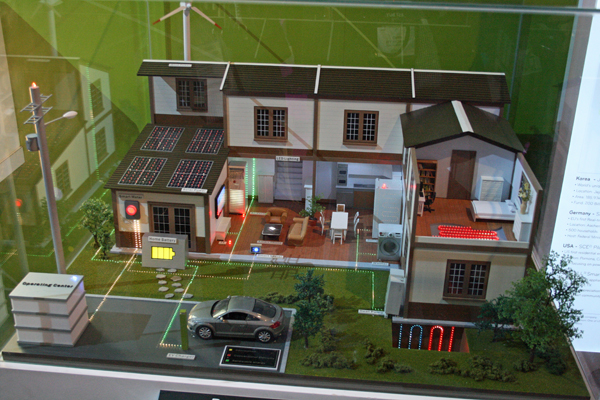
Looking beyond the major manufacturers, a number of small companies were also displaying home energy management systems. An example of this is ThinkEco and its modlet smart plug that lets you track and manage energy consumption at outlets around the home.
Energy Efficient Home Electronics
There was no lacking of energy efficient home electronics on display at CES 2011, particularly having to do with LED technology built into flat panel televisions and computer displays. It seems as if every major – and many minor –manufacturers were touting at least one glowing panel said to be more energy efficient than others. Many also claimed to be Energy Star certified.
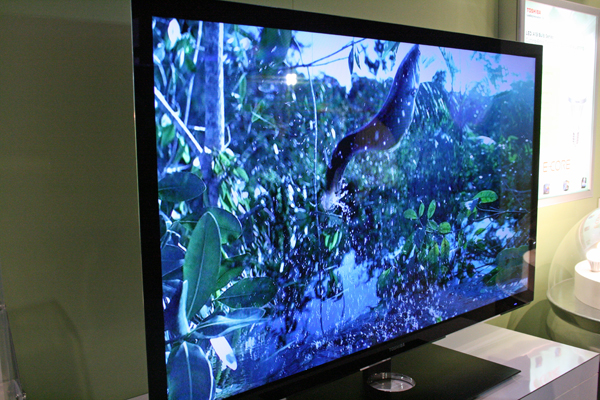
One thing which was interesting to note was how manufacturers, despite having many such energy efficient products on display, failed to mention this item as a feature in press materials distributed to the hordes of media from around the globe in Las Vegas. This glaring omission of information signifies perhaps that, despite some strong pushes towards greener products by CE manufacturers, lack of interest by consumers towards energy efficiency continues to remain an issue.
Electric Vehicles
CES 2011 is not known as a launching platform for new cars in North America. Rather, the Detroit auto show opening this week is typically the place for that activity instead. Not so much this year, however, as Ford chose this trade show to debut its highly anticipated Focus Electric. Built upon the universal Focus platform, the Focus Electric is expected to be available by year’s end. It was received at CES as one of the biggest product announcements of the show.
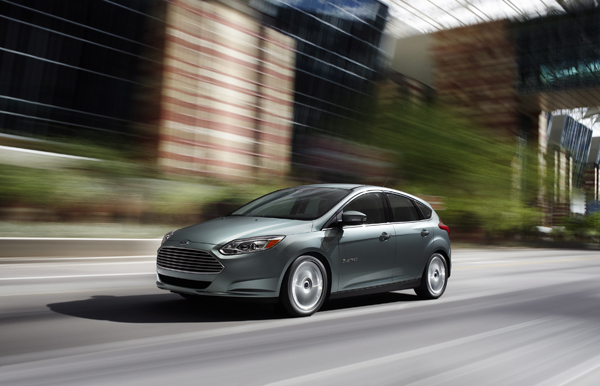
Beyond Ford, Audi was present showcasing one of its EVs, as well as GM. GM’s presence was a bit of a curiosity. In stark contrast to
Ford’s splashy CES entrance, GM maintained a simple presence in one corner of a parking lot. Perhaps it was letting its CES contribution – the autonomous functioning EN-V electric urban vehicle – speak for itself as several of them roamed around an enclosed area like big cats wandering a cage. A presentation by GM on the EN-V, which debuted at the Shanghai World Expo last year, talked about a future where these two seater cars roam the streets looking for parking while you perhaps read your digital tablet for the news of the day.
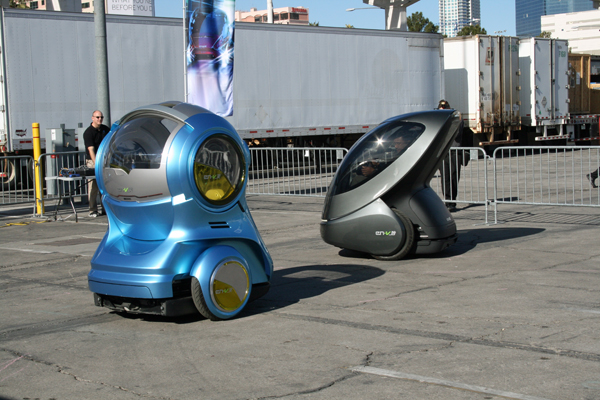
Clean Energy Devices
As we mentioned earlier, a wind turbine was on display at CES 2011 in GE’s booth. While this might seem a surprise to some, its presence with GE makes a lot of sense given the unified image of the smart home. What stood out more though on the wind energy front was the booth hosting Urban Green Energy, which we first ran across last year at the Small and Community Wind Conference in Portland. The start up was showing off its vertical axis Eddy wind turbine. Asked about why they chose to show up at CES, Urban Green Energy said it seemed to them a natural fit to showcase a residential turbine at a trade show focused on consumer electronics.
Outside of the very rare residential wind turbines on display, the continued obvious choice of small scale clean energy in the home are portable devices with efficient solar panels built into them. These solar chargers typically focus on charging devices ranging in size from mobile phones up through small home appliances. Also available with solar panels built-in are an array of handheld lights, like flashlights, which charge during the day and can then be used in the evening to help you find your way around.

Of the range of companies showcasing small scale solar panel technology, the ones which stood out the most to us were Solar Components and Voltaic. The latter is one well known to solar product lovers and whose solar backpack we reviewed last year. The company had on display two new solar cases, including one designed to hold and charge tablets like the popular Apple iPad.
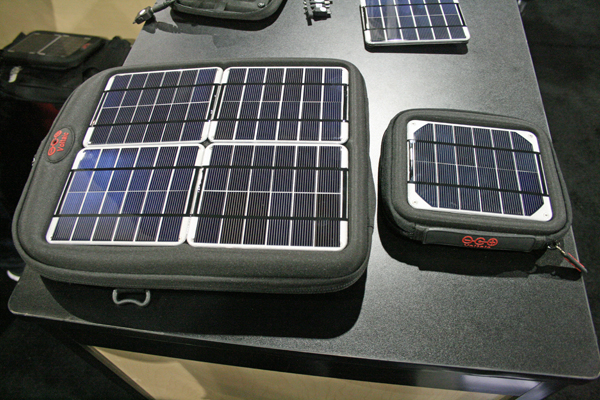
The other solar product company of note was Solar Components and its Joos Orange heavy duty solar panel charger. Boasting 17 percent efficiency and recipient of a Best Of award from the CEA, the Joos Orange is said to be capable of absorbing power into its battery while at the same time charging a connected device. It is meant to be used in a variety of outdoor settings and can still work even if submerged under water.
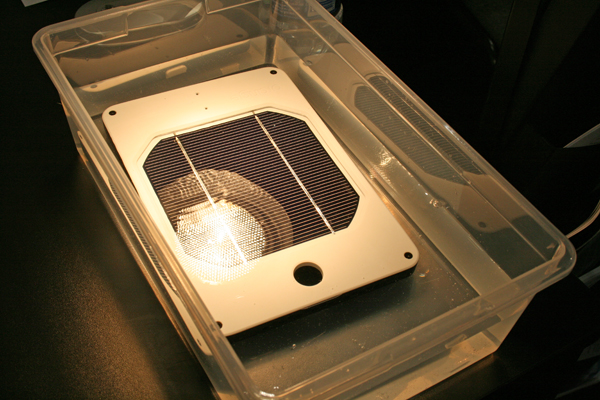
So there you have it, the interesting green technology from CES 2011. As for how these displayed items will play out in the coming year – especially the connected home given fears over privacy of one’s data and electric cars due to range anxiety – it is anybody’s guess. Still, it continues to be encouraging to see CE companies trying to go more green with their products.